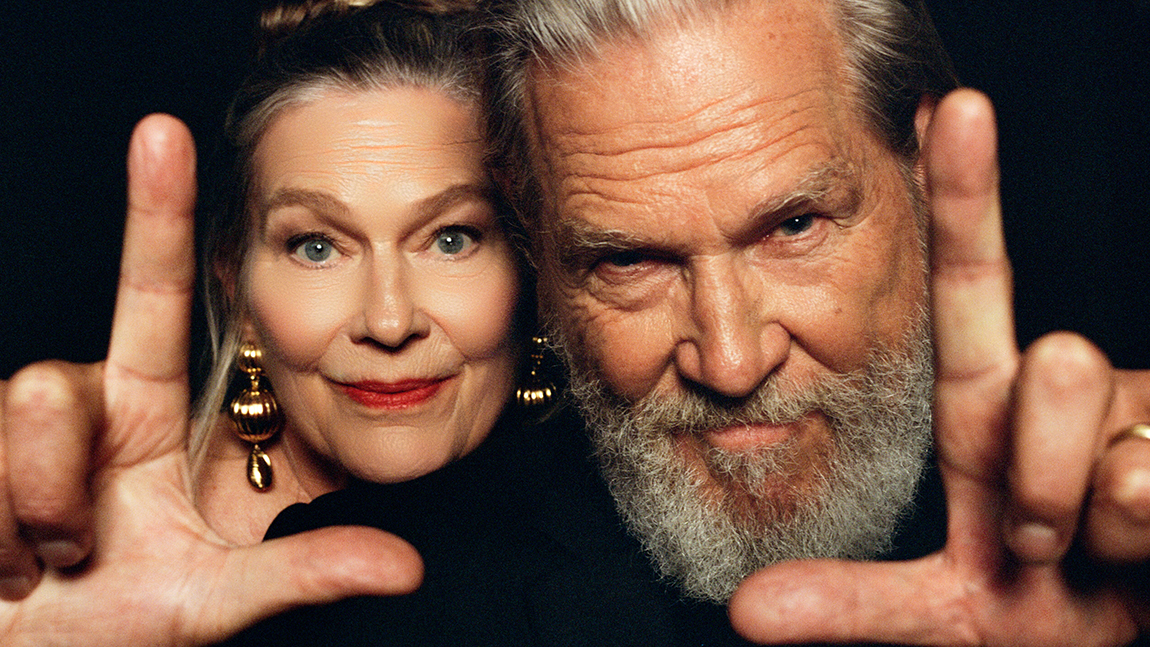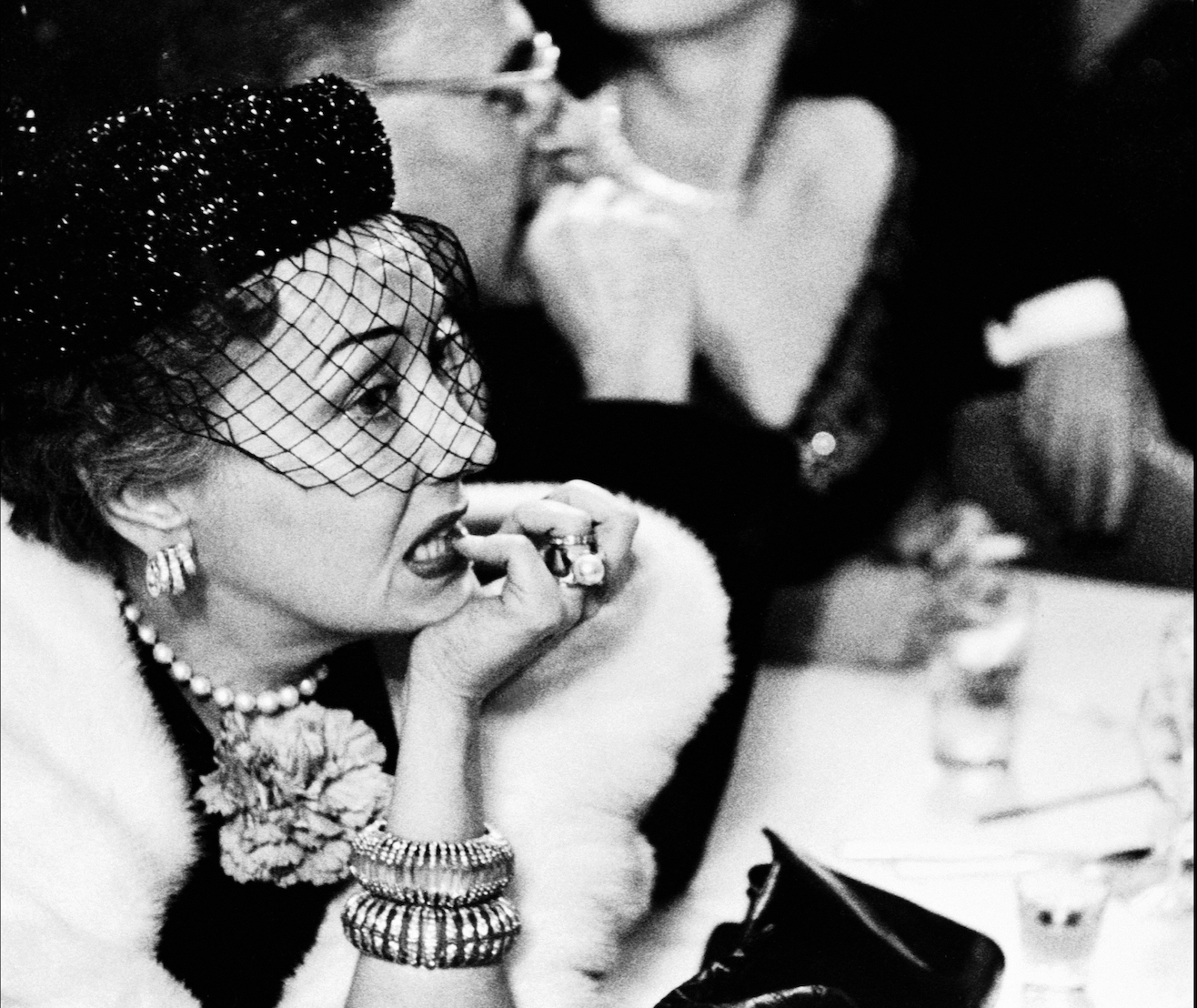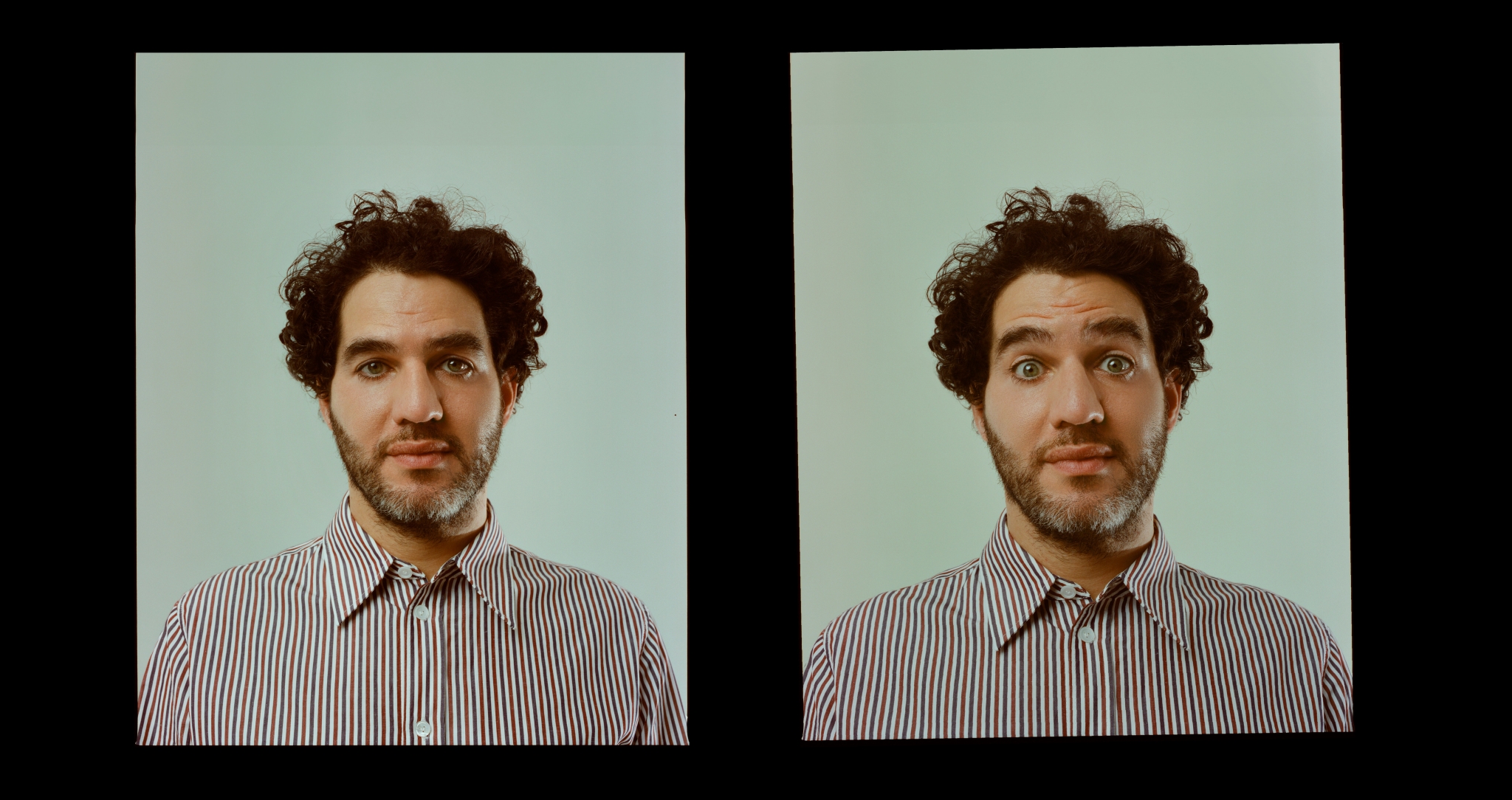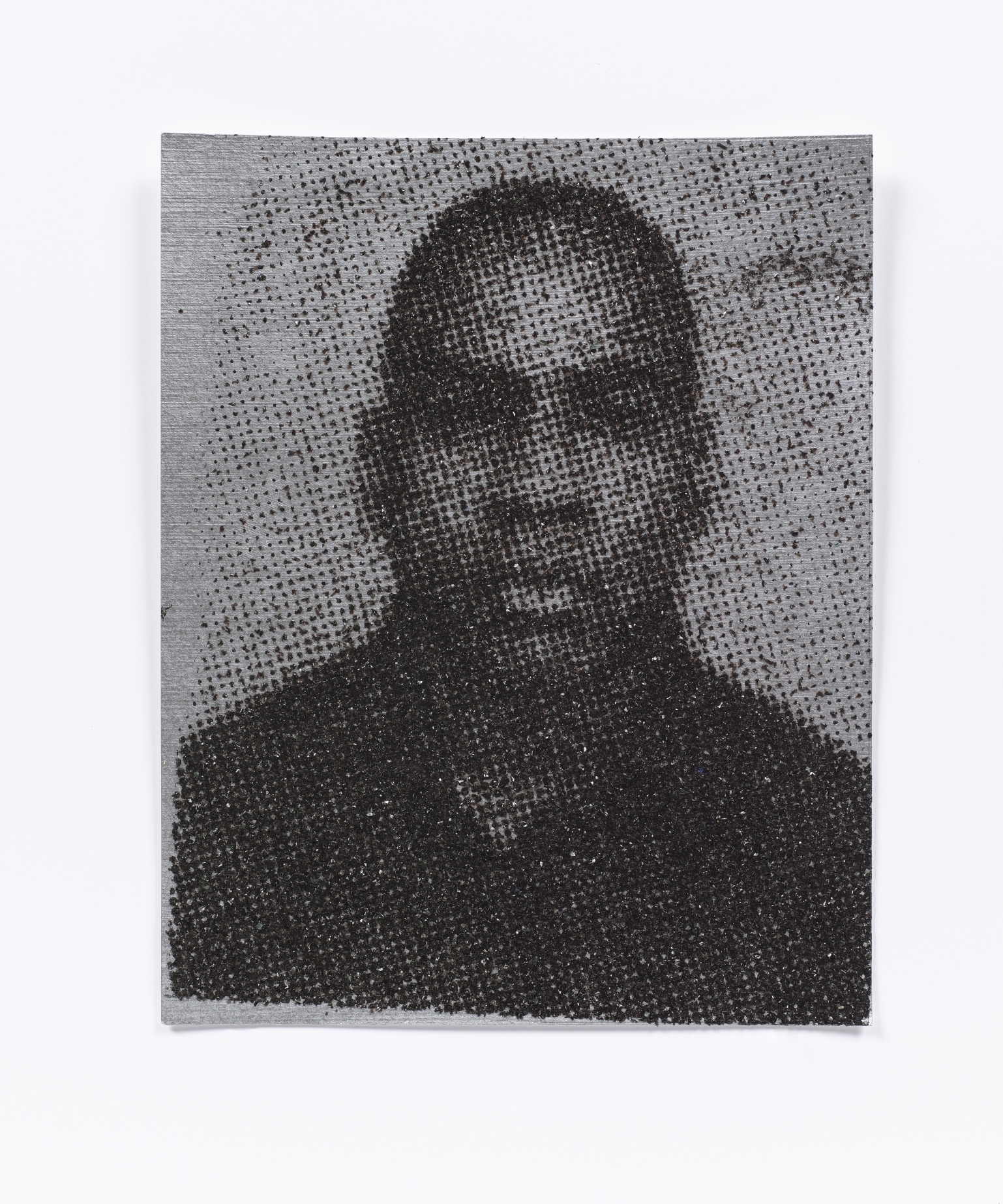
Few artists have understood the power of words to create meaning like Glenn Ligon. In this essay, Sofia Hallström investigates his abilities to shape notions of identity through language.
The words “I Am A Man” appear, at first glance, unassuming and straightforward. A bold declaration in stark black text on a white background: its clarity seems self-evident. Yet, when situated within the context of its origins, the phrase reverberates with profound historical and political weight, transcending its apparent simplicity. This sentence, painted onto hundreds of placards held by Memphis sanitation workers in 1968 as they marched in solidarity after the deaths of two workers due to unsafe working conditions, symbolised the workers’ assertion of their humanity amid systemic alienation and racial discrimination. This became a pivotal moment in the Civil Rights Movement, and was later utilised by artist Glenn Ligon in his Untitled (I Am A Man) (1988), a conceptual artwork that saw a reinterpretation of the sign, using subtle changes in the words’ arrangement and spacing to comment on memory, racism, and identity. The work opens up questions on words: can we truly convey and communicate the full depth of human experience through words alone? Words have their limitations; they are inherently ambiguous. But words also hold immense power, to inspire, comfort, or harm. Using language to explore complex themes of identity, race, sexuality, and history, Ligon’s relationship with words is central to his artistic practice.
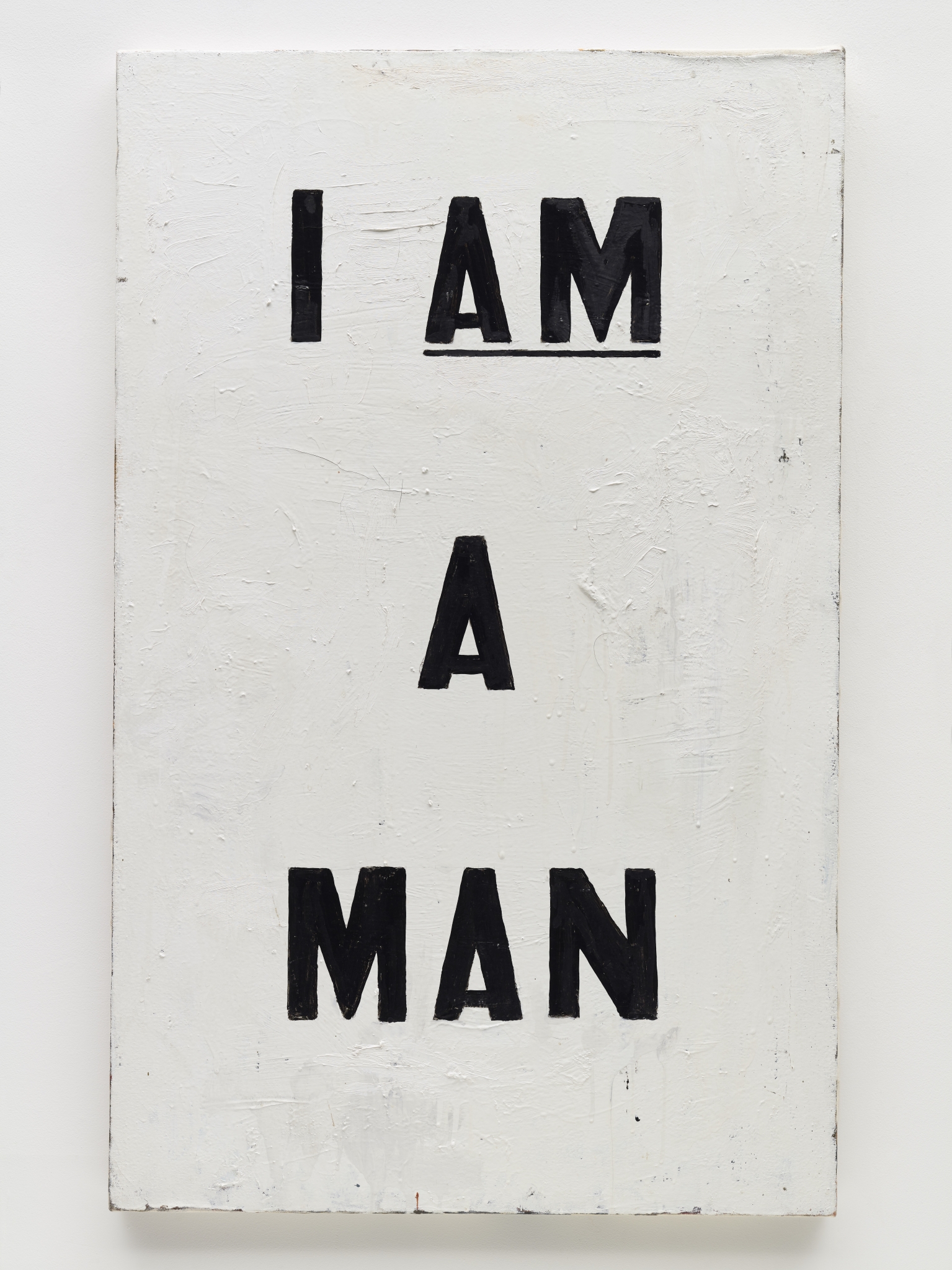
Glenn Ligon, Untitled (I Am a Man) (1988), oil and enamel on canvas, 101.6 x 63.5 cm / 40 x 25 inches; Collection of National Gallery of Art, Washington D.C. Copyright Glenn Ligon. Courtesy of the artist, Hauser & Wirth, and Thomas Dane Gallery; Photographer credit: Ron Amstutz
Born in the Bronx, New York in 1960, Ligon is a multidisciplinary artist whose work spans painting, neon, video, printmaking, and other media. Drawing on literature, history, and his experiences as an African American gay man, Ligon explores the complexities of Blackness and the enduring legacy of race in America, and his practice critically examines societal power structures, representation, and the narratives that shape cultural understanding. Central to Ligon’s practice is his use of text as a means to examine how racial identity is constructed, perceived, and lived. He frequently incorporates and transforms the words of African American authors such as James Baldwin, often rendering their words in ways that obscures their legibility. For many of his canvas works, Ligon often uses oil-stick that is smeared through lettered stencils. Ligon applies the pigments across surfaces—sometimes on canvas, sometimes on unconventional supports such as doors—creating layered, smudged, and partially obscured words. In his ongoing Stranger series (started in 1997), based on James Baldwin’s essay “Stranger in the Village” (1953), Ligon excerpts Baldwin’s reflections on being a Black person visiting a small Swiss village. Baldwin’s text is a reaction to isolation and the untranslatability of Black experience; his words are rendered in stenciled letters that smear and fade. As the stencils drag the paint downwards, residue accumulates, growing denser and heavier towards the bottom of the piece, reflecting on the weight of history, identity, and cultural memory. As these fragments of words often verge on illegibility, the work is a deliberate act of emphasising the tension between visibility and erasure inherent in the Black experience. By distorting words, Ligon creates a playing field where meaning slips beyond conventional definitions, inviting viewers to engage with the indelible qualities of language and identity. His work becomes a living, breathing experience; a visceral exploration of what happens when words both reveal and conceal the stories they carry.
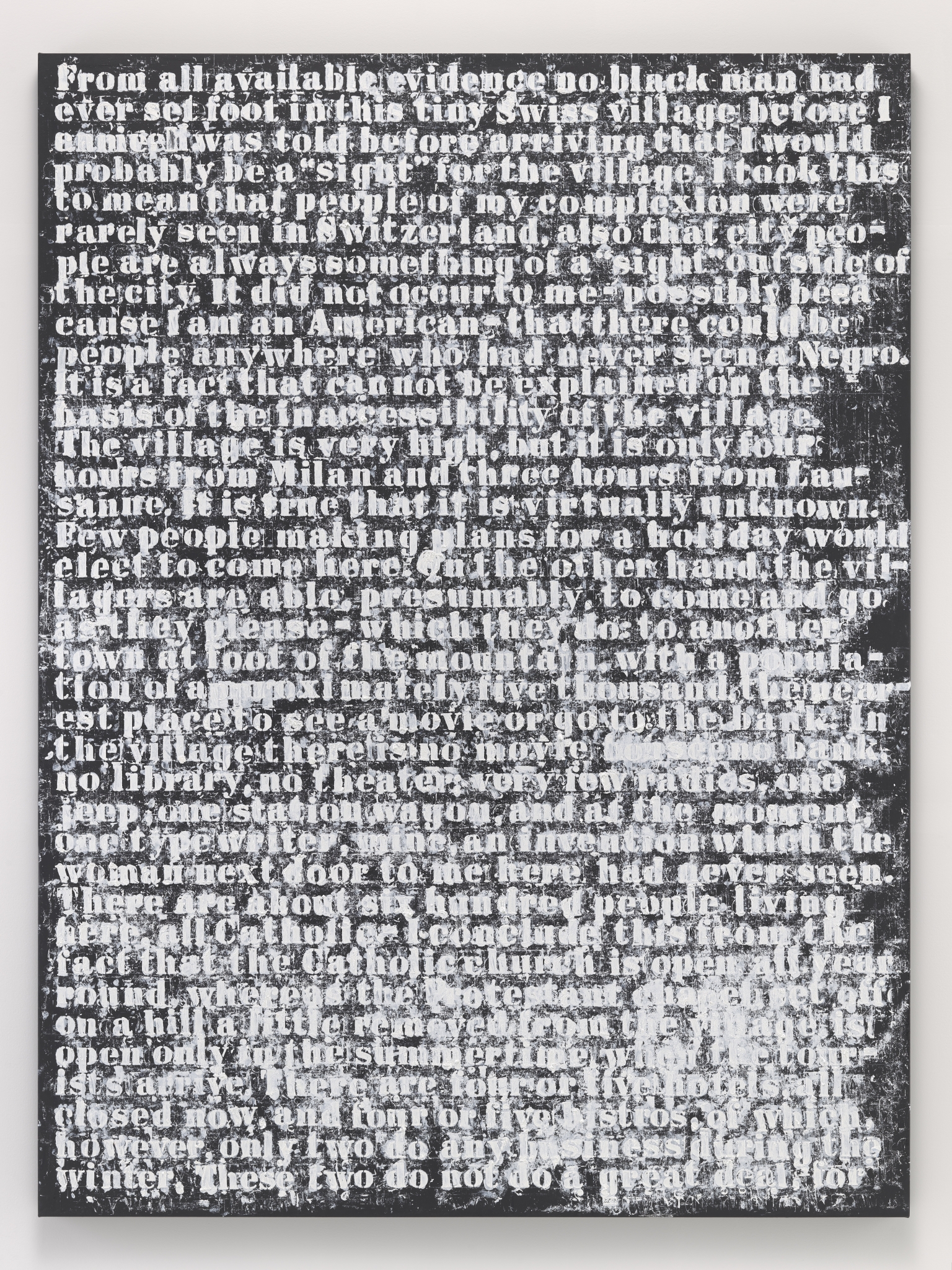
Glenn Ligon, Stranger #94 (2022), oil stick and black gesso on canvas, 243.8 x 182.9 / 96 x 72 inches. Copyright Glenn Ligon. Courtesy of the artist, Hauser & Wirth, and Thomas Dane Gallery. Photographer credit: Ron Amstutz
Ligon understands the power of words all too well. Language has long carried the weight of Black identity: denying it, constricting it, and distorting it. Jacques Derrida’s concept of différance provides a useful lens for reading Ligon’s work, where meaning is always deferred. By manipulating texts, such as those by Baldwin and Zora Neale Hurston, Ligon explores Black identity as something shaped through difference, constantly deferred, and never arriving at a singular definition. In Runaways (1993), Ligon uses imagery from 19th century advertisements seeking the return of escaped enslaved people to reflect on race and identity, making himself the subject with descriptions provided by friends. One description, for example, notes that Ligon has a “sweet voice, is quiet, and appears somewhat timid”. By inserting these personal descriptions, Ligon disrupts and juxtaposes historical and personal narratives, turning the absence of fixed meaning into an invitation to question and reinterpret.
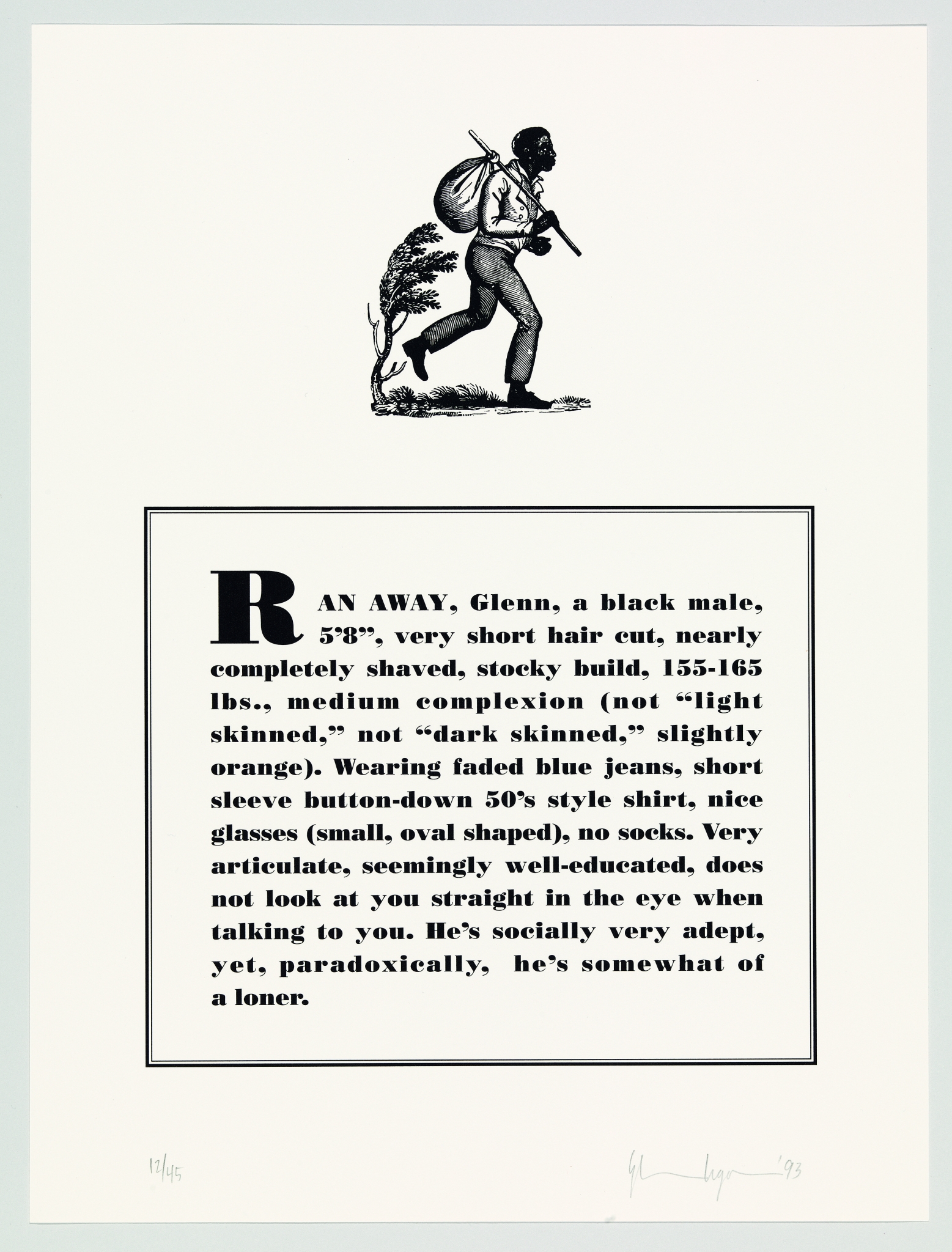
Glenn Ligon, Runaways (detail) (1993), suite of 10 lithographs, 16 x 12 inches (40.7 x 30.5 cm); Edition of 45 and 10 APs. Copyright Glenn Ligon. Courtesy of the artist, Hauser & Wirth, and Thomas Dane Gallery; Photographer credit: Jeff McLane
The failure of language then, in certain contexts, might not signal its inadequacy but it acts as an invitation to exploration. Just as many artists, poets, and philosophers have invented new words, metaphors, and syntaxes, art and words are not competing systems but complementary ones. Words are a medium where ambiguity and multiplicity are celebrated rather than constrained, creating an arena for meaning that language might leave untouched. In this sense, the slippage of words beyond their definitions serves not as a failure but as a reminder of the richness and diversity of human expression—of the interplay between what can be spoken, what can be shown, and what can only be felt. In contemplating the interplay of these systems, we might also reflect on whether the boundaries of language mirror the boundaries of thought. Are there realms of human experience that defy articulation because they lie outside the structure of our linguistic systems? If so, does art act as an extension of cognition itself; a means to bridge the gap between the conceivable and the inexpressible? In the end, the interplay between words and art challenges us to reconsider the nature of meaning, the role of interpretation, and the infinite ways in which humans seek to make sense of their world.
Today, the media continues to shape Black identity, oscillating between demonetisation and commodification. News coverage frequently criminalises Blackness, disproportionately associating Black individuals with crime or unrest, as seen in the reporting of the Ferguson protests in 2014. Yet Ligon refuses to submit to the authority of language. Instead, he twists it, fractures it, makes it deliberately difficult to read, and sometimes he makes it deliberately loud and confronting. Speaking about his neon work Untitled (America/Me) (2022), Ligon notes that he is “interested in playing with that word [“America”] as material. So to cross it out, to invert it, to put it upside down, to make it blink on and on obnoxiously. It’s all a way of playing with this word when we think we know what it means.” The repeated, large-scale rendering of the phrase is visually arresting and demanding, forcing viewers to confront the complexities of race and identity in contemporary American culture.
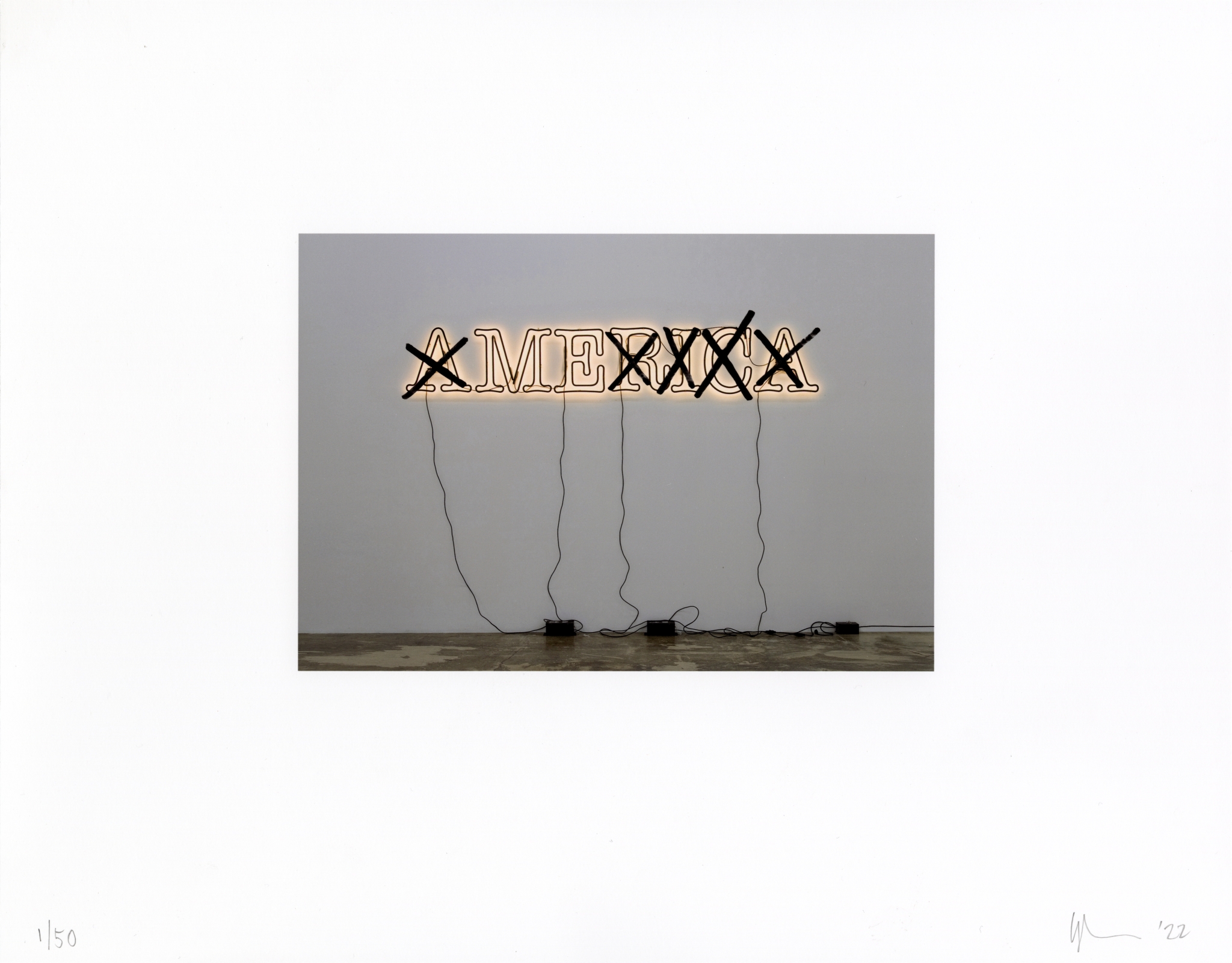
Glenn Ligon, Untitled (America / Me) (2022), digital image with hand-drawn additions, Edition of 50 and 10 APs. 27.9 x 35.6 cm / 11 x 14 inches. Copyright Glenn Ligon. Courtesy of the artist, Hauser & Wirth, and Thomas Dane Gallery
Every letter in Ligon’s work opens up a space in which the past and present, the visible and invisible, have the potential to collide. Through fragmentation, Ligon opens new possibilities for understanding and redefining identity, whereby he forces language to become more than a tool of power: it becomes a space for negotiation, contestation, and reinvention. Ligon is not just responding to the signs of history, instead he is actively reshaping them. By taking the power of language, the very force that has been used to deny and constrain Blackness, and flipping it on its head, every work becomes an interrogation. Ligon’s work doesn’t let us sit back and accept the rules. It asks us to look again, to read deeper, to see how the words have been manipulated and reformed. It asks us to think about how we shape identity through language and how we might start to reshape it again.


